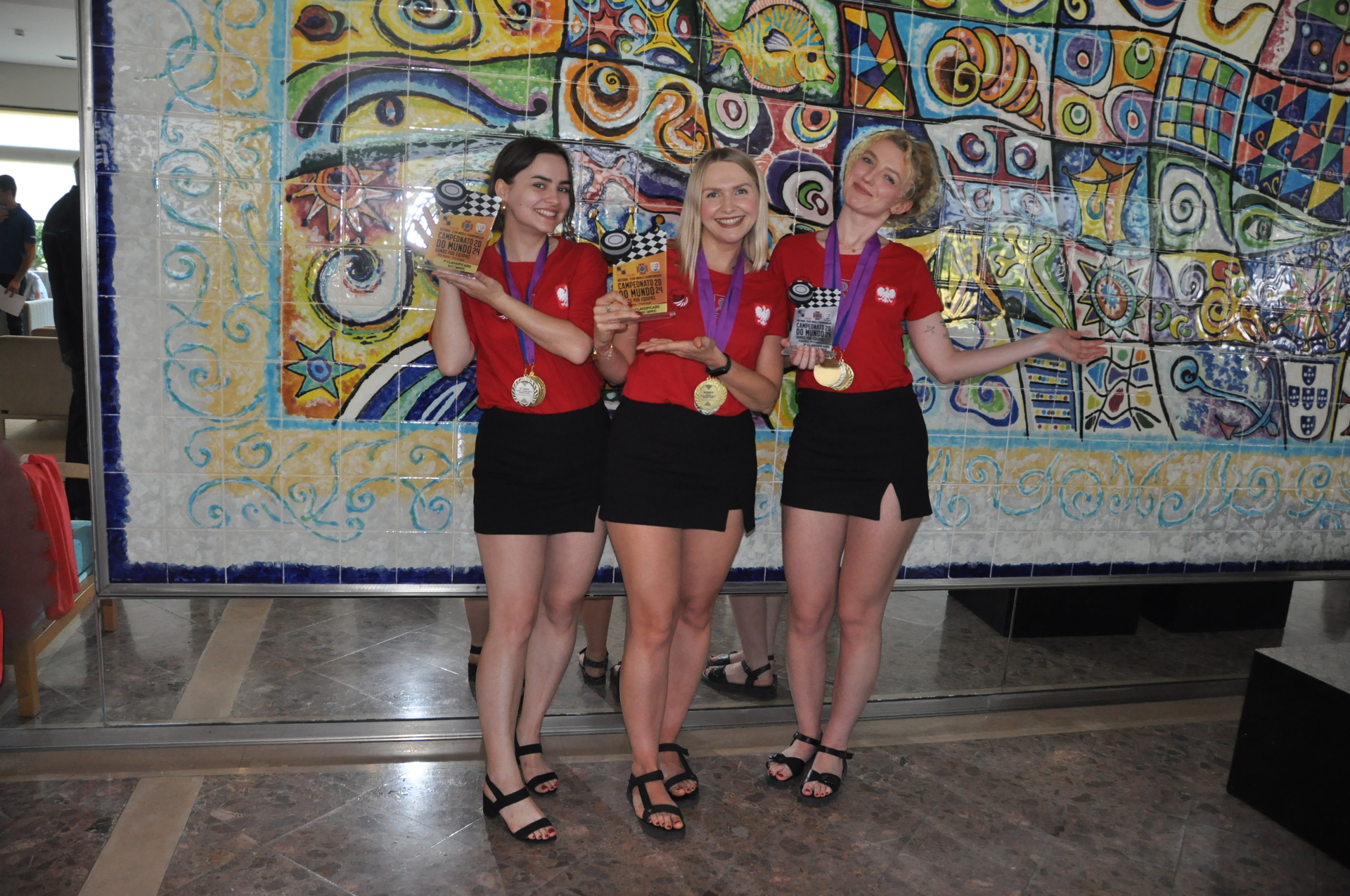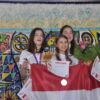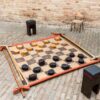The 2024 World Team Championship in international draughts (checkers) ended in Albufeira, Portugal. We know the best teams in the world in classic, rapid and blitz games. Now that the medals have already been awarded, it is worth taking a look at what is worth praising the organization of this tournament and what should be improved for the future.
Foto: photos.fmjd.org
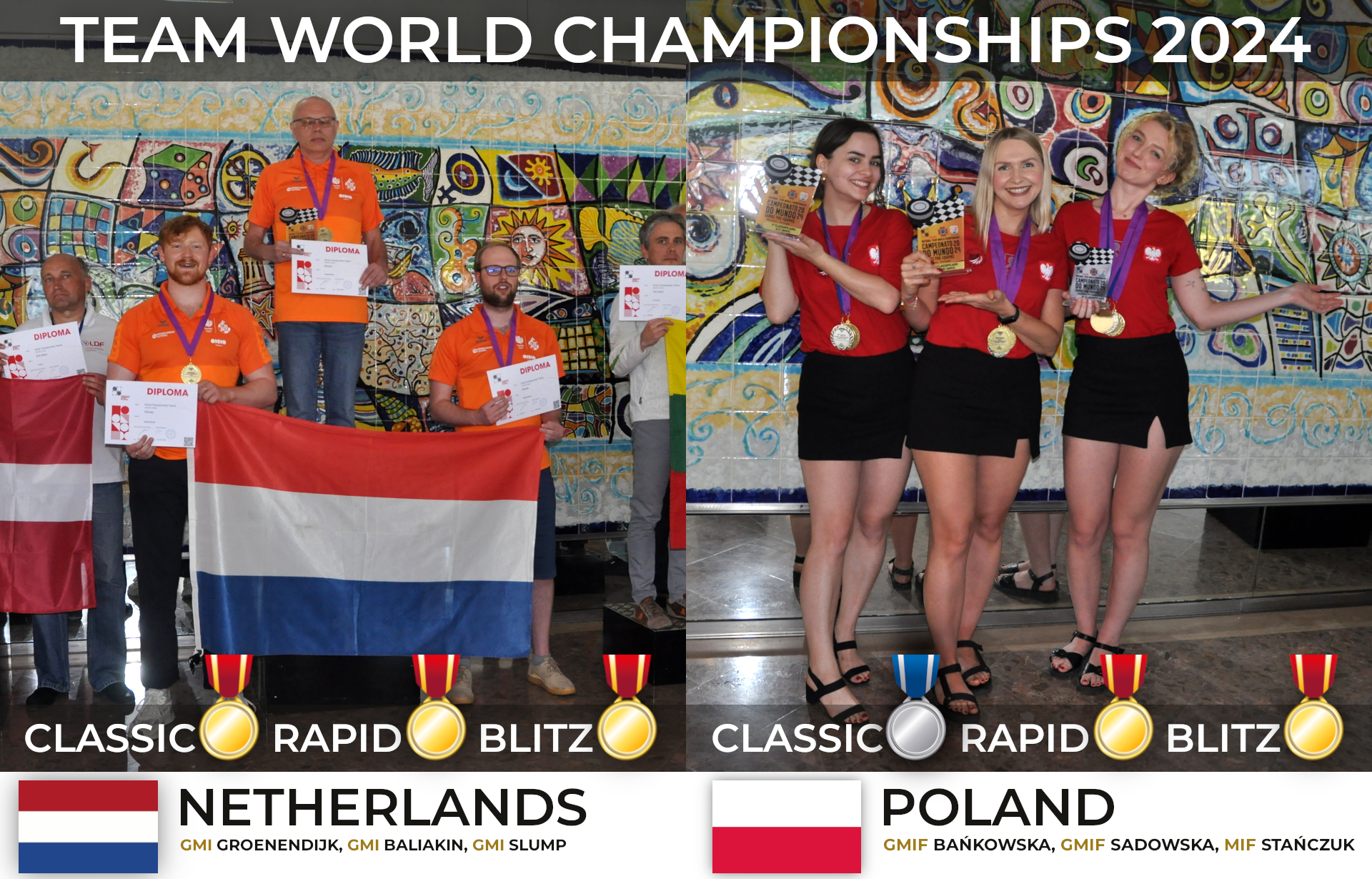
Medal Table 🥇🥈🥉 – Team World Championships 2024, 1-8/5/2024, Albufeira (Portugal)
- Netherlands – 🥇🥇🥇 (men classic, men rapid, men blitz), 🥉🥉 (women classic, women blitz)
- Poland – 🥇🥇 (women rapid, women blitz), 🥈 (women classic)
- Latvia – 🥇 (women classic), 🥈🥈🥈 (men classic, men rapid, men blitz)
- Lithuania – 🥉🥉 (men classic, men blitz)
- Ukraine – 🥈🥈 (women rapid, women blitz)
- Israel – 🥉 (men rapid)
- China – 🥉 (women rapid)
The men’s team from the Netherlands dominated the championship, winning everything there was to win. The team consisting of GMI Jan Groenendijk, GMI Alexander Baliakin and GMI Jitse Slump was out of the competition’s reach. Without any major threat from other teams, the Dutch confidently won three gold medals. Among women, the greatest medal achievements went to Poland, with GMIF Marta Bańkowska, GMIF Natalia Sadowska and MIF Katarzyna Stańczuk playing. The Polish women were the best in rapid and blitz, and in the classic they were second only to the phenomenal Latvia (with 10-, 14- and 24-year-olds in the squad, as we wrote about HERE).
Final Standings 📋
Another world championship tournament is behind us. The quality of tournaments for the most important trophies is a joint responsibility of the entire draughts (checkers) community, which is implemented by the World Draughts Federation (FMJD). So let’s talk about what from the Portuguese tournament is worth praising and what needs to be improved?
Let’s start with the praise. I didn’t speak with any of the tournament participants, so all my observations come from the perspective of an internet viewer. Firstly, it’s heartening to see the flags of the participating countries displayed during the ceremonies. It’s a nice touch to witness the podium and hear the national anthems of the winners being played. Although these may seem like obvious elements, many events still overlook them. Undoubtedly, the current FMJD Executive Board is making efforts to elevate the status of team tournaments and encourage the participation of new countries. It’s refreshing to see representatives from Guinea-Bissau, Portugal, China, and Curaçao on the starting lists – countries that we rarely (if ever) see in international competitions. FMJD president Jacek Pawlicki has consistently emphasized the importance of team competitions, both at the national and international levels, for years. His dedication to promotion, statistics, and engagement is commendable. I understand that for many countries, sending a team to this tournament was financially prohibitive, but this is the reality of the checkers world. Changing this situation will be a gradual process, one that needs to begin now. And this leads to further reflections.
What needs improvement? The successes of players in top-tier tournaments, especially at the World Championships, serve as the best driver for promoting the discipline. Medals and titles can quickly become viral; people eagerly click, read, and share them. But to give this process a better chance of success, we need… really good photos. Not ones taken with a phone, poorly framed, or blurry. Professional photos of players before, during, and after the game. In this day and age, ensuring professional photographic coverage for at least one round of the competition and the opening and closing ceremonies should either be provided by the FMJD or required by the organizers. And I write this as an event organizer for the FMJD. Take a look at the photos taken in Poland by Adrian Franek before one of the many tournaments in the Grand Prix of Poland series:
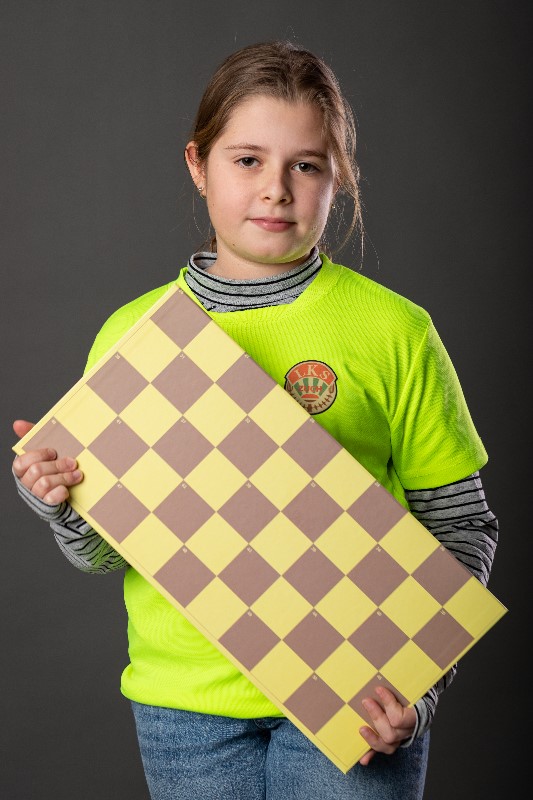
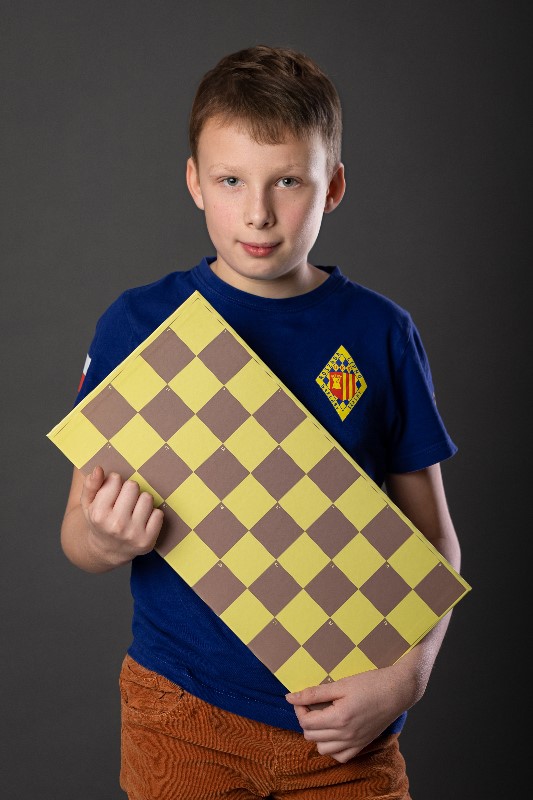
Polish media quickly picked up on the success of the Polish women in Portugal, and articles about this fact garnered thousands of reactions and hundreds of shares, becoming some of the most popular publications on media portals. And all of this was achieved using… a photo that I received from our representative, Marta Bańkowska.

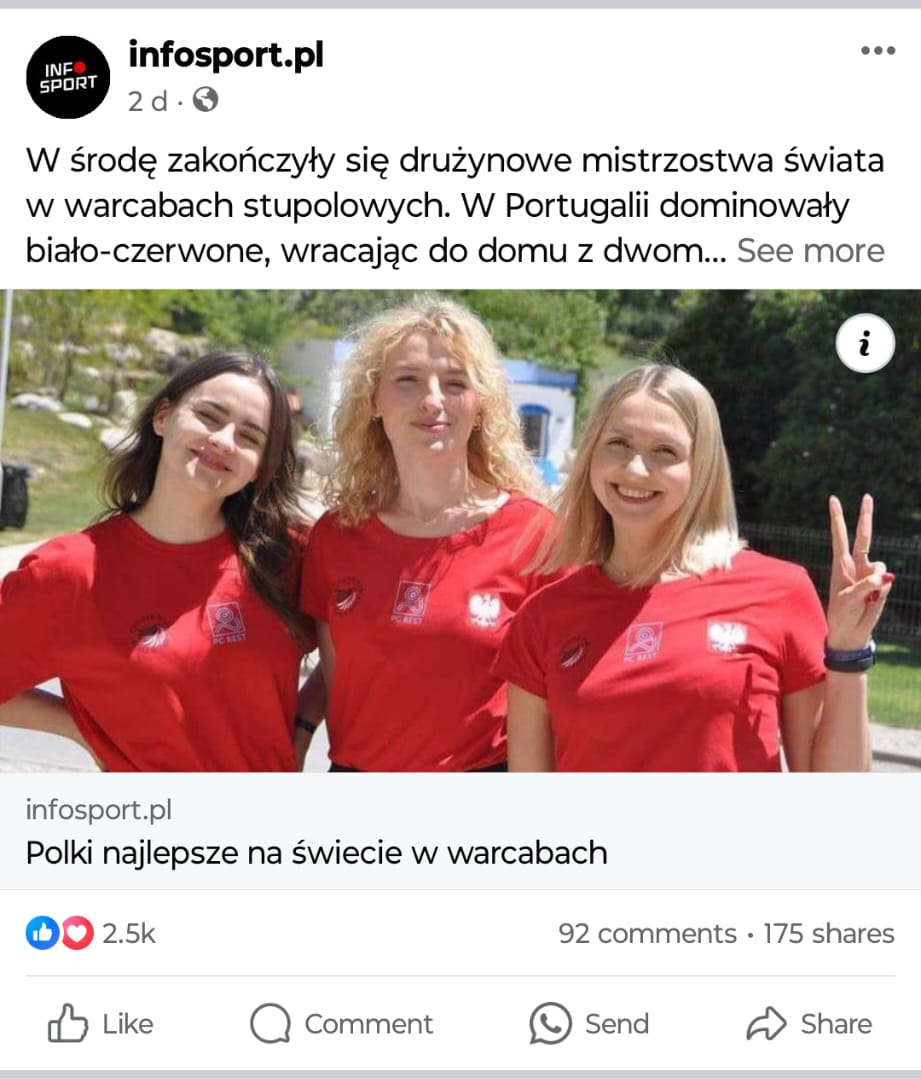
High-quality photos are an absolute necessity and a topic that should be so obvious that we shouldn’t even have to discuss it. Moving forward, I can’t ignore a dimension that is particularly close to me and which I consider incredibly important. Not just in Poland, but as soon as possible – worldwide. I’m, of course, talking about tournament coverage. We live in the third decade of the 21st century. The internet is such a ubiquitous tool that by not utilizing it as we should, we become victims of a passive attitude. Just like in a game of checkers. It will be very difficult to achieve anything, and most likely, we’ll put in a lot of effort (organizing more tournaments) without gaining reach (losing the game). We’re losing immense potential. We’re losing irreversibly.
The Team World Championships in Albufeira is another top-tier tournament following the World Championships in Curacao from which we couldn’t follow the games live. It’s simply unbelievable for a sport aspiring to gain recognition from the International Olympic Committee, striving for promotion of the discipline at an international level. What’s the problem? Access to draughts boards? There are many federations that have electronic DGT boards, including Poland. Nobody asked me about borrowing them. I assume the same goes for other federations. Setting aside the issue of “borrowing,” if there is indeed a problem with the availability of electronic boards, then FMJD should prioritize addressing this issue. In this day and age, there must be other, likely cheaper alternatives than the discontinued DGT boards. And live game transmission is a fundamental source of action for people like me, who need to increase in number.
Live games alone are already sufficient for conducting live broadcasts. It would be great to have a video feed from the playing hall, not to mention access to cameras from various games. Nowadays, this is really inexpensive! For 500 euros, you can buy a used laptop with a dedicated graphics card, cables, tripods, and 4 webcams. And you can already broadcast video from 4 games! And this is a one-time expense. Of course, it won’t be a TV broadcast, but the quality will be much better than in Curacao. I’m willing to help anyone who asks me for assistance, offering my experience. But if nobody asked, then still nobody asks.
The things I mentioned above should also be obvious to the FMJD. In this day and age, it should be obvious to conduct broadcasts with commentary from every FMJD tournament (including World Championships and World Cup tournaments) on FMJD channels. There are professional companies that handle broadcasts for significant amounts of money, reaching thousands of euros per day. But the draughts community doesn’t necessarily need TV-level production; what it needs is regular content delivery to build recognition. A broadcast with commentary from a weekly tournament should fit within a total cost of 1500-2000 euros. And these are not astronomical sums of money. Especially since by creating content wisely, it could pay off, and perhaps even bring profit in the near future.
Let it be said aloud once again – every year, every tournament without the above is a time of missed opportunities when we could be growing our community. And this growth is essential for greater popularity, more players, more sponsors, and thus better conditions for all of us. Unfortunately, I doubt that the current Board will address this issue in the last year of their term. It will probably be up to me (us) to create videos like this one, to at least try to make the world of draughts and draughts players better. The kind of world our sport and our players deserve:


